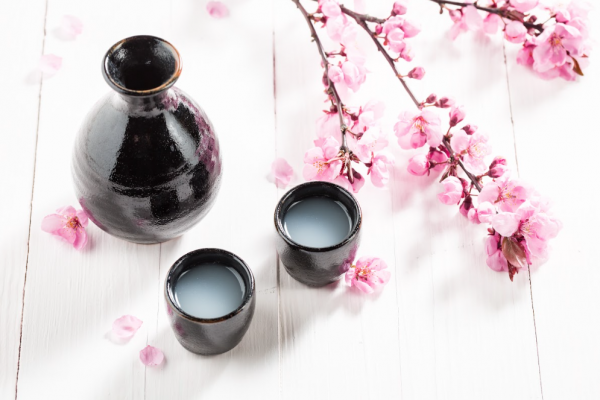From its social prominence to health properties, the benefits of tea have been well documented in its long and rich history. As Tea WG embarks on a pilgrimage to Darjeeling in search of the finest first flush harvests, Ha Rin Choi asks Tea WG tea connoisseur Jacky Ng about the speciality of Darjeeling tea and his tea recommendations for early summer

The unique terroir of Darjeeling – its cool climate, high altitudes of up to 2,500 meters, distinctive soil and rainfall – imparts a distinct and naturally occurring quality. As such, Darjeeling tea from first flush harvests is widely known as the king of black tea.
And the secret of a fine cup of Darjeeling tea is the process behind it. One of the most labour-intensive functions in the world, it is carefully picked by hand and showcases an exquisite quality of craftsmanship with a very high percentage of downy silver tips. To fulfil rich aroma and complex flavour, it requires a considerable amount of tender shoots, a very young or a new part growing on a plant. It takes approximately 20,000 to 22,000 tender shoots of newly developed tea plants to produce 1 kilogram of Darjeeling tea.
Handcrafted in the most natural and artisanal tradition, Darjeeling tea helps keep both inner and outer beauty healthy.

Among various teas from different countries, what makes Darjeeling tea so special? What history and customs does it have?
Darjeeling tea, known as King of Black Teas, is cultivated high in the Himalayan Mountain range’s foothills in India’s northeast region. Tea WG has a dedicated garden on the stunning Okayti estate, where it grow, pick, process and serve the most delicate fragrance and flavour.
It is cultivated from the Camellia Sinensis tea plant, which has smaller leaves and can thrive in cold climates and high altitudes. As such, it lends the harvests have a delicate complexity and yield exceptionally refreshing infusions.
Also see: The long-awaited Hong Kong Palace Museum opens to public on 2 July
What efforts are behind bringing tea leaves to tea cups? Can you elaborate on the process of craftsmanship?
Tea plants are cultivated sustainably using only natural fertilisers and pesticides at the Tea WG Chiya Bari tea estate. It allows growing and flourishing the way Mother Nature intended. Additionally, tea planters create natural spray from wild weeds, lemongrass and neem seeds to protect the tea bushes from pests. This entire process of growing, picking, processing, and serving the tea contributes to a great cup of tea.

What is Darjeeling tea good for? How does it help inner/outer beauty and health?
Black tea, like Darjeeling, is rich in antioxidants, zinc, vitamins A and B and is also invigorating as it contains high levels of theine. It reduces the risk of many diseases, including heart disease and certain cancers.
Also see: 5 Netflix shows to dive into July
Why are we all talking about Darjeeling tea at this time? Is there any correlation between summer and the efficacy of the tea?
Darjeeling is one of the most celebrated tea-producing regions in the world, situated in the northeast of India in West Bengal. And each tea is hand-crafted in the most natural and artisanal fashion. Thus, every harvest from renowned Darjeeling estates is unique and unlike any other. Consequently, Darjeeling harvests are best appreciated following their harvest – when fresh, raw notes and delicate, nutty bite are most pronounced.
In spring, the intense sunlight in the cold Himalayan air bursts the dormant tea bushes into life with the first spring harvests. Adding to it, the unique terroir of coolant temperature, high altitude, distinctive soil and rainfall imparts a naturally occurring quality and flavour that yields some of the most revered black teas in the world. However, the first flush Darjeeling harvests account for only 20 per cent of the annual Darjeeling production, making it exceptionally rare and highly sought after.

What tea would you recommend besides Darjeeling’s first flush harvest tea for this season? And why?
Eternal Summer Tea: A fragrant South African red tea embellished with notes of sweet summer rose blossoms accented with raw berries. Finishes with a lingering aftertaste reminiscent of ripe Tuscan peaches. This theine-free tea can be enjoyed hot or iced at any time of the day.
Midsummer Night Tea: A fairy’s elixir. Warm and pleasant black tea blended with a hint of malty chocolate and spicy mint. This luscious tea is to savour on an extended summer night.
Pink Flamingo Tea: A graceful Tea WG blend of green tea with crimson hibiscus blossoms that will brighten your day. This quirky mélange infuses into a rose-coloured cup with tart, fruity overtones.

Is there any recommended way to enjoy the tea? How can we make the best of it?
1. Prepare a teapot made of a non-porous material like ceramic, glass or porcelain. Bring water (preferably filtered) to a boil and pour it into and around the teapot to warm it up.
2. Weigh out 7g of tea leaves and put them in a reusable cotton tea filter. Empty the teapot and place the reusable cotton tea filter inside, covering it with a lid. This gently steams the tea leaves and prepares them for infusing.
3. After a minute, pour water of about 90-95°C into the teapot through the reusable cotton tea filter and leave it covered to infuse for precisely 3 minutes.
4. Remove the reusable cotton tea filter from the teapot and serve. Display the infused tea leaves on a plate to appreciate their colour and aroma if preferred.
Also see: International Yoga Day 2022: 6 must-try studios in Hong Kong























































